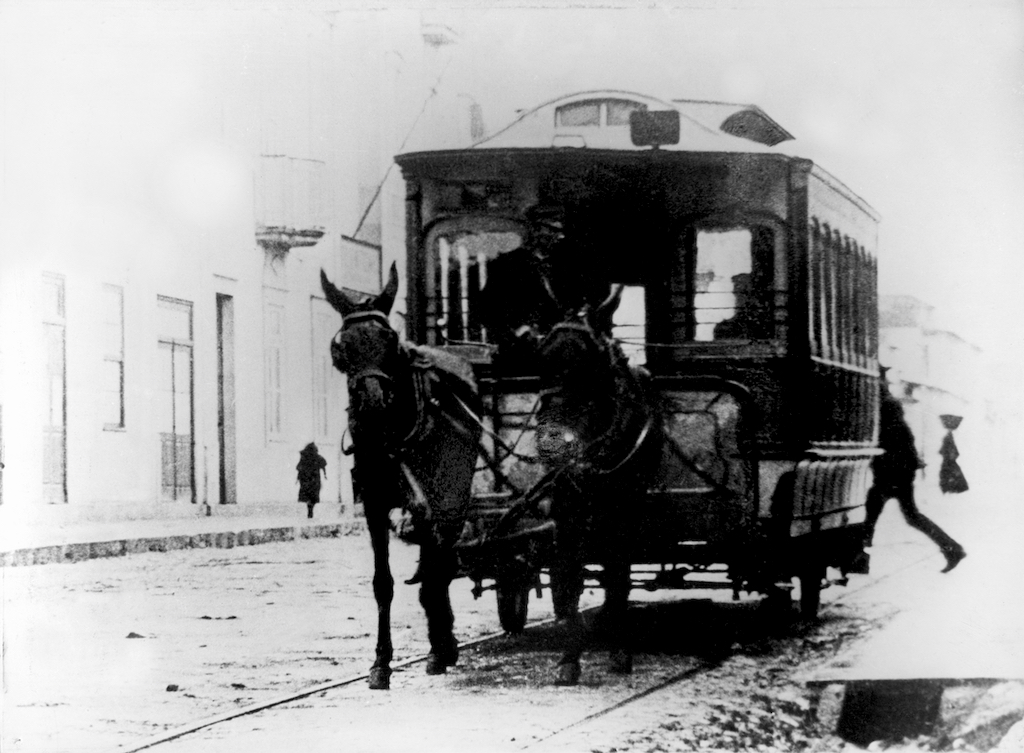
The history of the oldest Porto tramcars is very complicated, but partly also obscure. They were hauled by both mules and steam locomotives. Later part of them were transformed into electric trams while the others continued as trailers of the electric trams. The majority was disposed of during the second decade of the twentieth century, but a few even made it into the first half of the 1960’s.
This page is about the vehicles, there are separate pages about the history of the mule and steam tram networks.
Carril Americano
Little is known about the tram-cars of the CCA. The closed cars, at least the first delivered, were of the type common the 1860’s with many tramways in North America and also used on early European systems like Copenhagen, Berlin and Brussel. They had windows of small size which could be raised, and for the sake of increasing the light were provided with semi-circular etched glass windows above the main windows.
Trailer no.8, now in the museum, and trailer 9, now in Crich, are examples as well as replica electric tram no.104. The first two cars of this type were delivered in September 1871. In October 1871 an open car arrived with seven transverse benches. The first three cars of the CCA were built by Metropolitan of Saltley (Birmingham, UK).
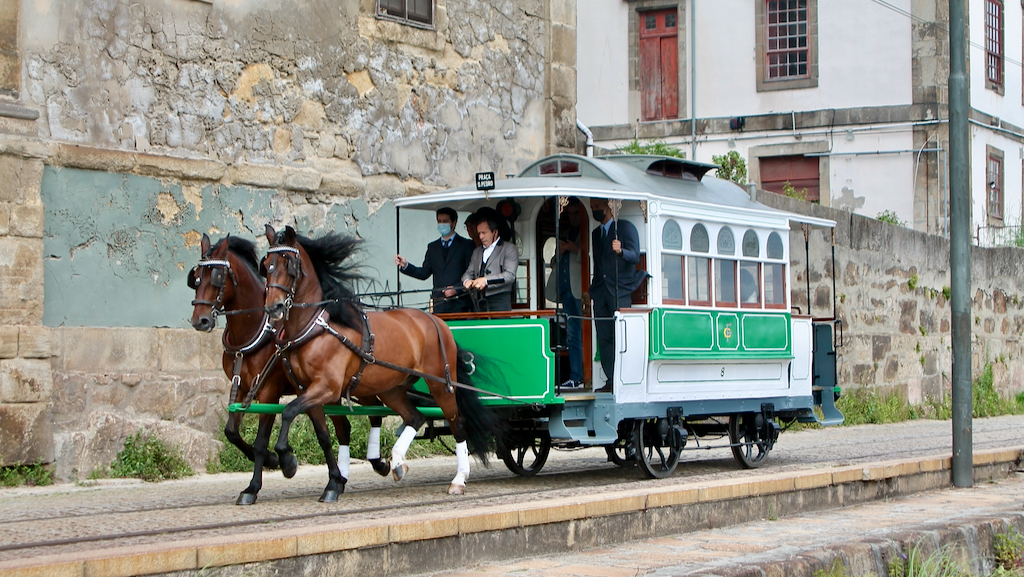
Museum car no.8, which was likely used on the Restauração line, has evidence to be built by Starbuck (Birkenhead, UK). No more is known about the builders of the CCA cars. In March 1872, when services started there were six cars available. In May 1872 another six cars arrived. The “O Primeiro de Janeiro” of 3 June 1879 notified that after the fireworks of the Senhor de Matosinhos festivities the company ran a convoy of 30 mule tramcars. When the Carril Americano was bought by the CCFP, they had a total of 31 tram cars, but it is unknown how many there were of the several different types.
CCFP until 1892
In 1874 the CCFP acquired from Starbuck 28 tramcars for passengers. Four were open and the other 24 closed but of two different sizes. Of the large type two had also seats on the roof. The closed cars were of a type introduced in America in 1872 and more modern than the trams of the Carril Americano. They had larger windows which could be lowered instead of raised to open them. Compared to the older type lightning and ventilation were improved and with similar size cars the weight was about 10% lower, which was important with horse trams.
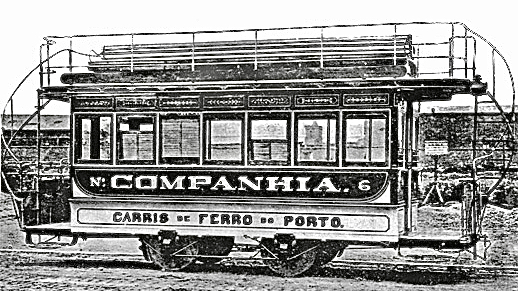
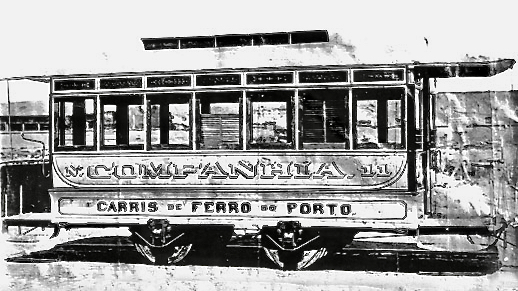
In 1875 three more cars were acquired from Starbuck. In 1875/6 two open and two closed cars came from the Societé Metallurgique Charbonnièr Belges and in 1876 two other open cars from Leon et Eugene Deletrez (Paris). In October 1877 a car was presented in the Palácio de Crystal built by the workshops of the CCFP. By 1878 the number of cars was increased to 43. But the origins and types of the new cars are unknown. The cars 44 & 45 were newly constructed in 1879.
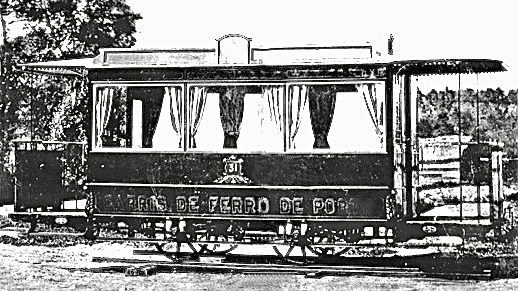
In 1882 the number of passenger cars was raised from 45 to 51 by acquisition and reconstruction of six cars of the Larmanjat system, which operated during a short period from Lisbon to Sintra and Torres Vedras. These got the numbers 46-51 and were likely only used as trailers in steam trams and later with electric trams. During the years 1883 until 1891 the workshops built another twelve cars of which one was a replacement of an older tramcar. These new cars built by the workshops were likely copies of the type delivered already in 1874 by Starbuck.
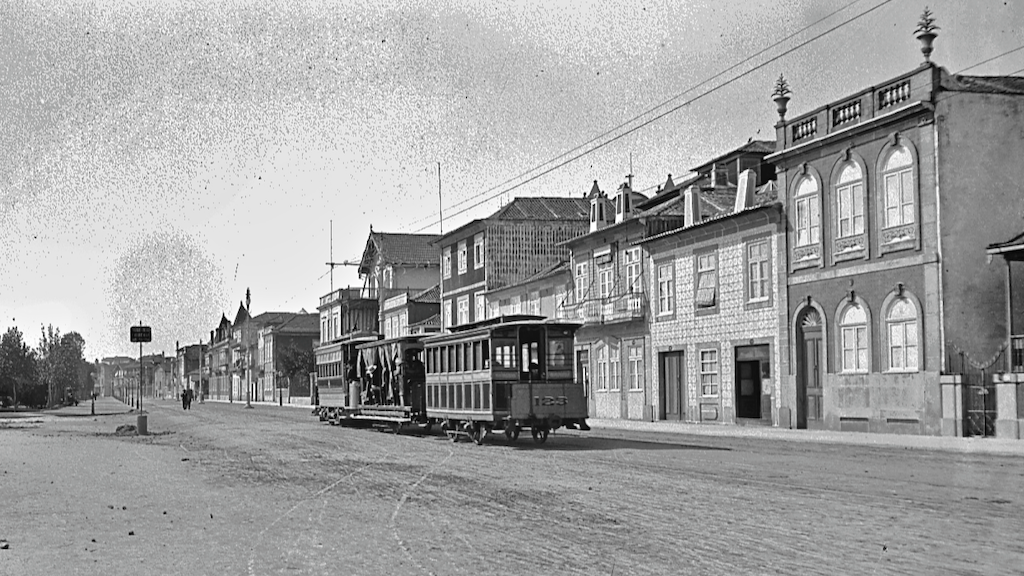
In 1892 the CCFP had 62 tramcars for passengers. It’s not known for sure how many there were of the different types, but the best guess is 30 large closed cars, 9 medium sized closed cars, 13 small closed cars and 10 open cars.
CCFP 1893-1946
With the fleets of the Carril Americano and the CCFP combined there were 93 tramcars. Based on photos there existed the following types:
* Large, medium sized and small cars with small square windows and with semi- circular etched glass windows above. At least one of the large cars originally was built with benches on the roof, which were later removed. These came from the Carril Americano.
* Large, medium sized and small cars with large square windows. At least two of the large cars were was built with benches on the roof, which were later removed. These came from the CCFP.
* Large cars with eight large top-curved windows.
* Large cars with eight square windows. These were likely the reconstructed Larmanjat cars.
* Open cars with longitudinal benches and a barrel shaped roof.
* Open cross-bench cars with seven, six or five benches inside.
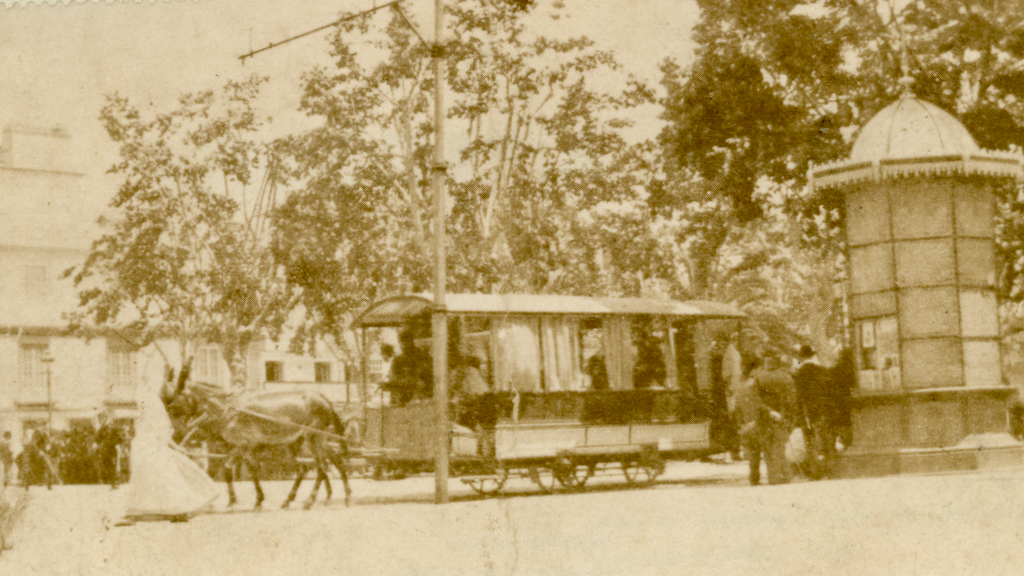
When mule car operations were ended, there was no more need for small light cars which were by preference used on the lines with steep inclines, at least when the traffic demand was not very high. The CCFP enlarged the trailers, in many cases by extending the platforms. Of some cars the body might have been enlarged. As part of the program also the bottom frames were enforced to withstand better the forces when used as trailer. Museum car 8 clearly had these changes.
In total 29 or 30 mule cars / trailers were transformed into 25 or 26 closed and 3 open motorcars. The difference is because in one case two small closed mule trams were used to make one large electric tram. In 1908 one was converted back.
The old trailers retained their fleet numbers they had as mule trams since at least 1893 until about 1901. Likely because confusion with electric trams in the same number range occurred they were renumbered to numbers above 100. In 1907 a new renumbering round was done, this time by adding 100 to the fleet numbers of the electric trams and at the same time giving all at that moment remaining trailers numbers in the range 1-59. Few details are known, but a 1909 lists gives the width of their benches. The no’s 1-50 were of the closed type, all with two longitudinal benches, 51-53 were open tramcars with longitudinal benches and 54-59 open cars with cross benches. This 1909 list is updated with data extracted from other documents.
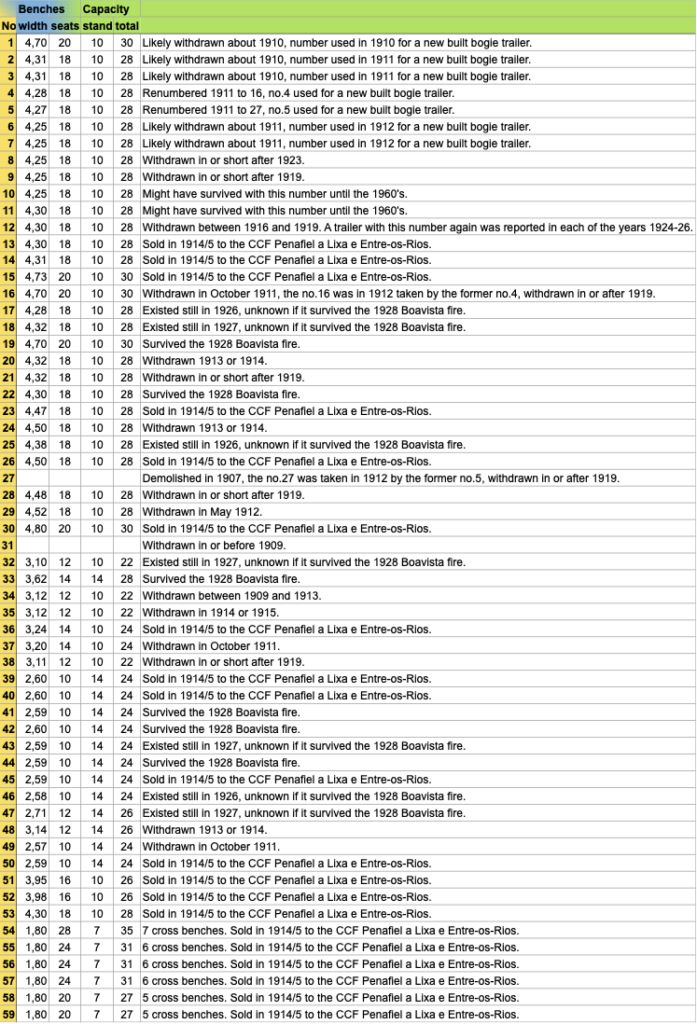
Most of the unconverted mule cars were retained as trailers until the arrival of the bogie trailers (1911/12) and the closure of the steam tramline (1914). Around 1914 twenty trailers were sold to the CCF Penafiel á Lixa e Entre-os-Rios. The CCFP had in 1916 only 23 old type trailers left, which were all of closed types. On 31 December 1925 there was a total of 25 trailers, which means 7 bogie and 18 old trailers. Four old trailers went lost in the 1928 Boavista depot fire. In 1931 there were eleven old trailers left.
Around 1930 were the remaining old trailers gathered together, likely by renumbering the ones with the highest numbers to the lowest available numbers. In 1934 three new trailers were built, the “Fumistas” getting the numbers 18-20. As the bogie trailers had the numbers 1-7, likely at that moment there were still ten old trailers with the fleet numbers 8-17.
There were still 20 trailers during the years 1936 and 1937, which means 7 bogie, 3 Fumista and 10 old. During the years 1938 to 1940 there were 19 (9 old) and during the years 1941 to 1945 there were 18 (8 old).
A document dated 19 February 1940 says that, except for the bogie and Fumista trailers, there were four trailers type car no.11 with 18 seats, four trailers type car no.15 with 12 seats and one trailer type car no.14 with 18 seats.
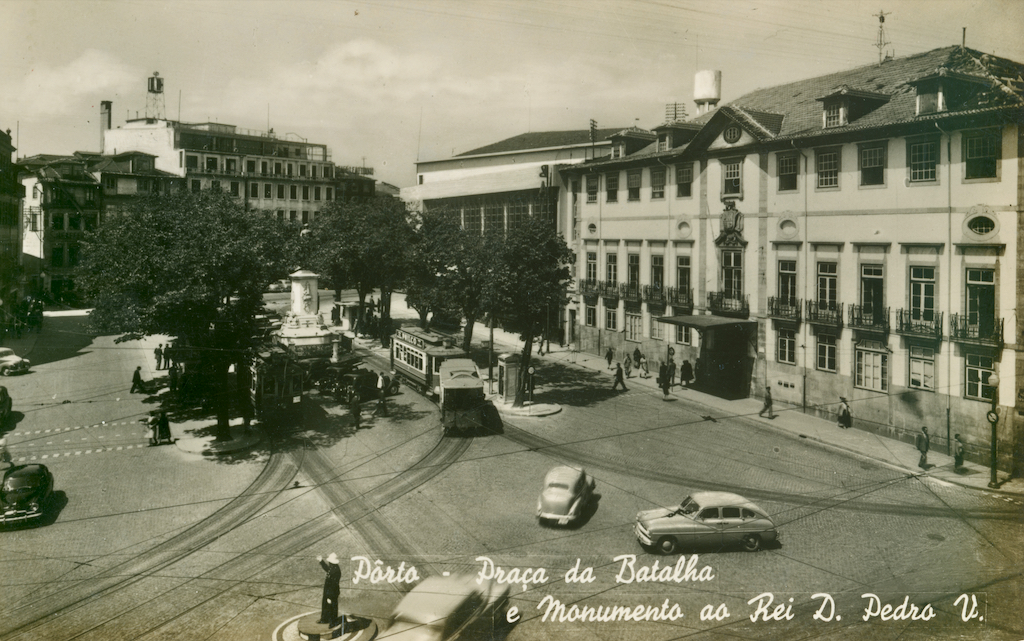
STCP
Of the eight old trailers that still existed in 1946, the STCP kept only three large (9, 10, 11) and two small (8, 13) trailers in service. With the CCFP trailer operations had always be limited to line 1 between Infante and Leça da Palmeira, and line 5 between Carmo and Leça da Palmeira. When the by the municipality owned STCP took over, the same municipality allowed trailers to be used on some other lines too. STCP planned to construct a series of new motorcar + trailer combinations, but with only one of those trailers finished the plans were changed to new motorcars only. Instead new trailers STCP converted six old trams into trailers, getting the fleet numbers from 21 up. It’s not sure if all six were former mule tramcars converted to electric tram about 1900. Some might have been electric trams built before 1904, but of most of these trailers pictures or other documents fail to determine the type. The only by the STCP new built trailer was converted into a motorcar in 1949.
There were in 1950 24 trailers (7 bogie, 3 Fumista, 8 old and 6 old converted from an electric tram), of which 17 were in daily service and the others in reserve or under repair. Between 1950 and 1959 the total number of trailers (bogie, Fumista and old) gradually went down from 17 out of 24 in daily service to 10 out of 20 in daily service with four of the oldest cars disposed off. In 1960 the route to Leça da Palmeira was cut back to Matosinhos because of the extension of the Leixões docks. The trailer operations on the lines 1 and 5 ended because no turning loop could be made in Matosinhos. The bogie trailers, which had spent their whole career on line 1, were now out of work except for some extras between Boavista and Foz during the beach season. As the lines to VN de Gaia, and with that line 14/ had been suspended already in 1959, trailers were now only used on line 9// between Bolhão and Ermesinde. During the first years of the 1960’s only three to six trailers out of the eighteen were in daily use until the total suspension of trailer services in 1966.
Trailer 8 was one of the first museum cars. Trailer 9 was sold to the Crich museum in the UK. Trailer 22 was electrified again later to represent the oldest type of electric tram in the museum. All the other old trailers were scrapped.
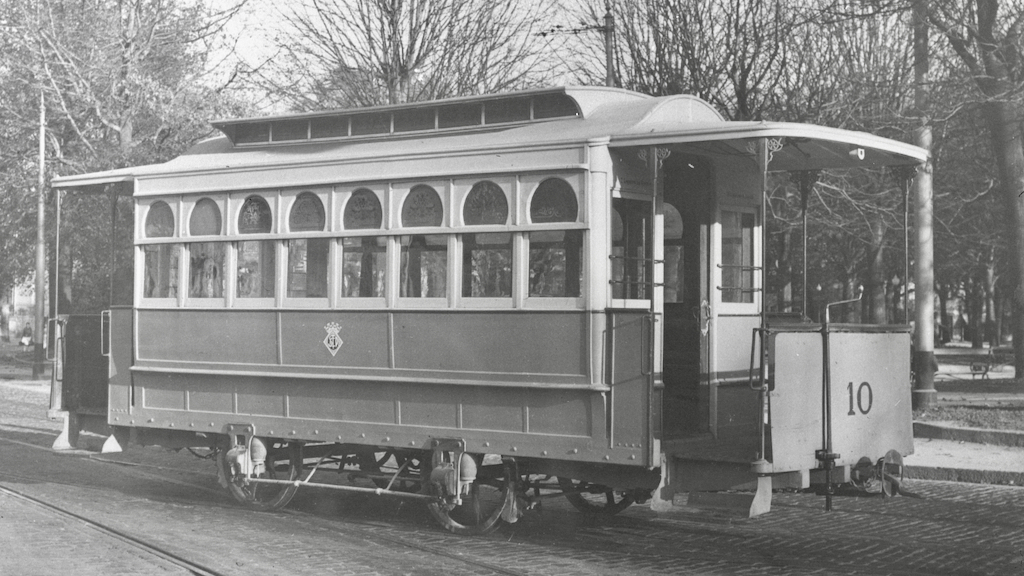
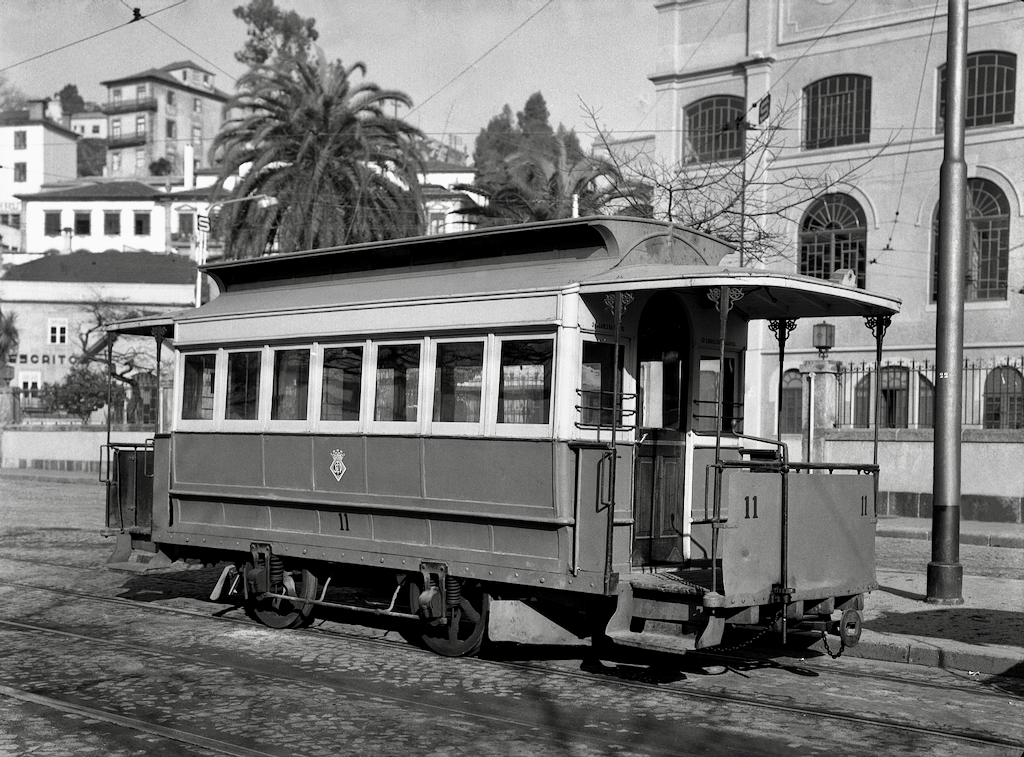
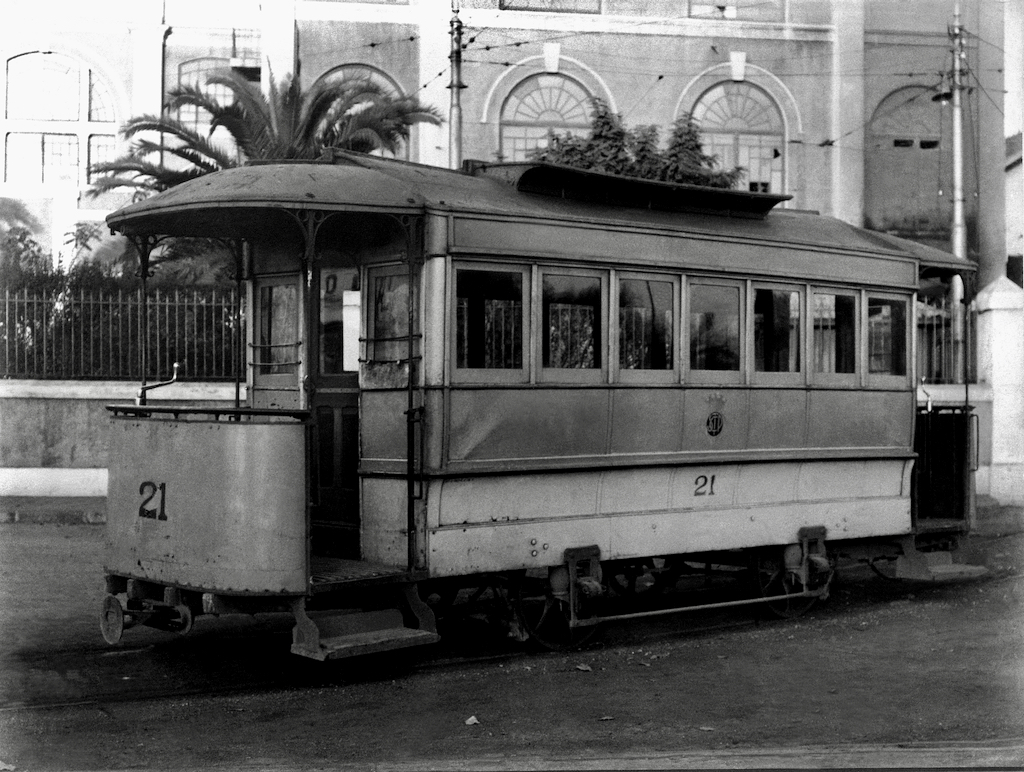
Sources
Guido de Monterey: O Porto, Origem, Evolução e Transportes, 2nd edition published in 1972.
Manuel Castro Pereira: Os Velhos Eléctricos do Porto, published in 1995.
John Price: The Tramways of Portugal, 1st edition 1964, 2nd edition 1972, 3rd edition 1883, 4th edition 1985 (3rd & 4th editions together with Brian King) Published by the LRTA.
Own research in the CCFP/STCP archives stored in the Arquivo Distrital do Porto, Rua das Taipas 90 – Porto.

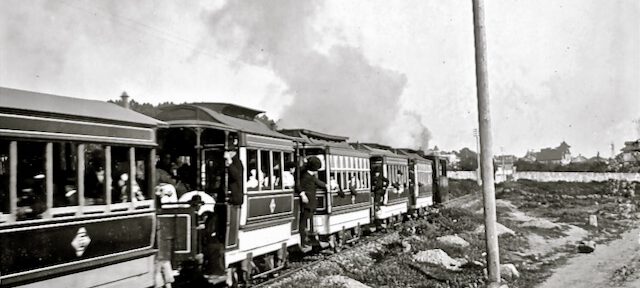
Leave a Reply